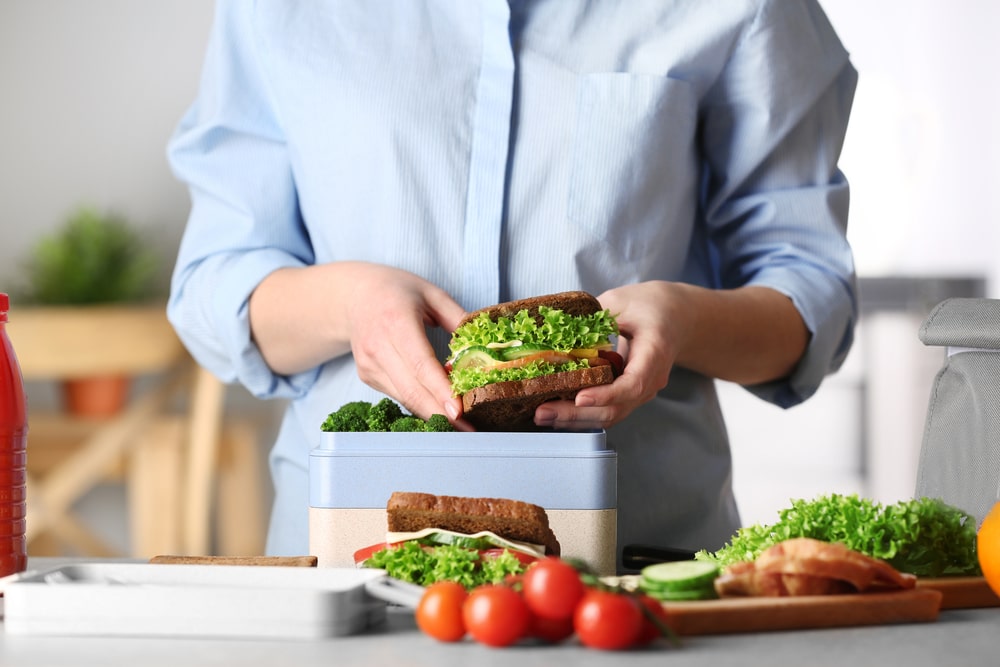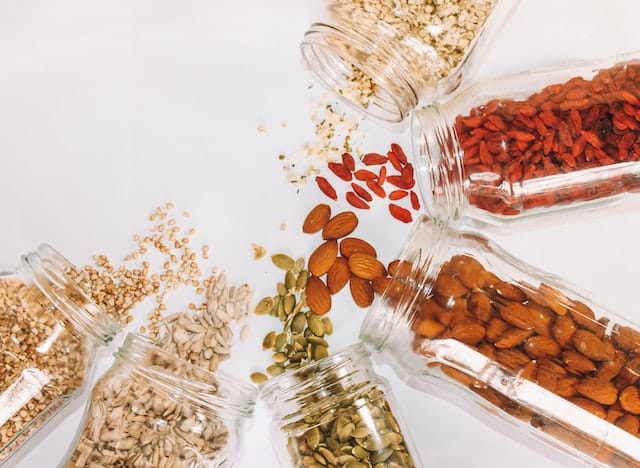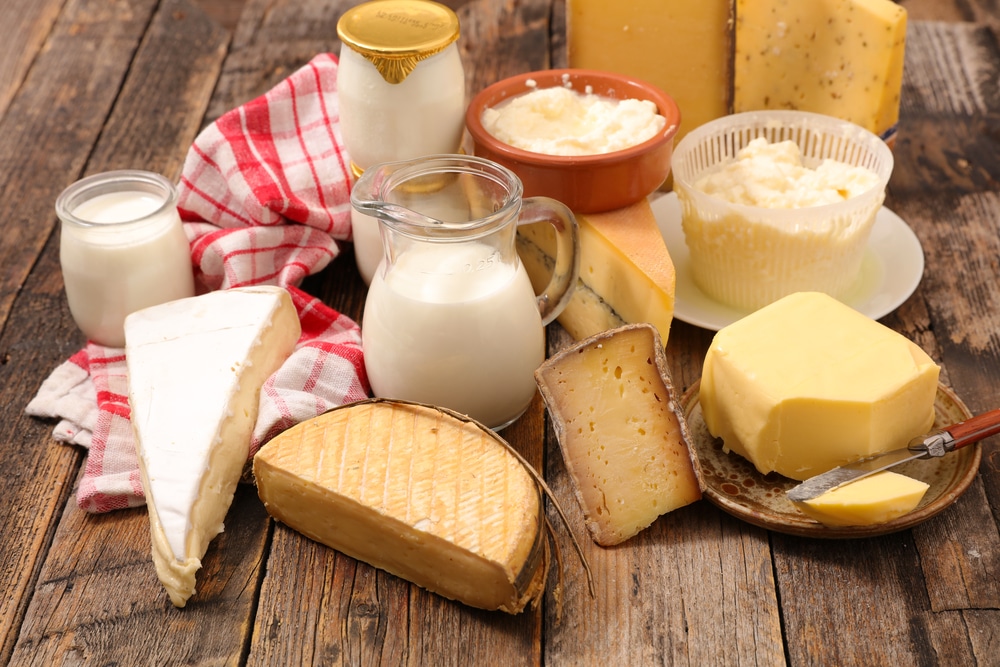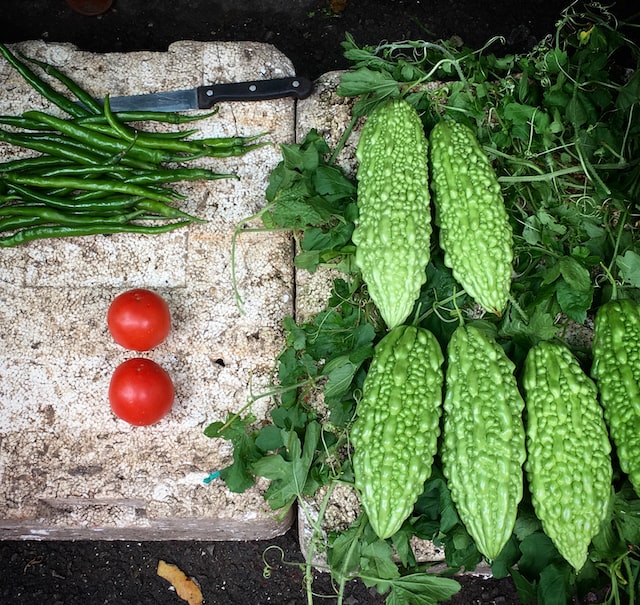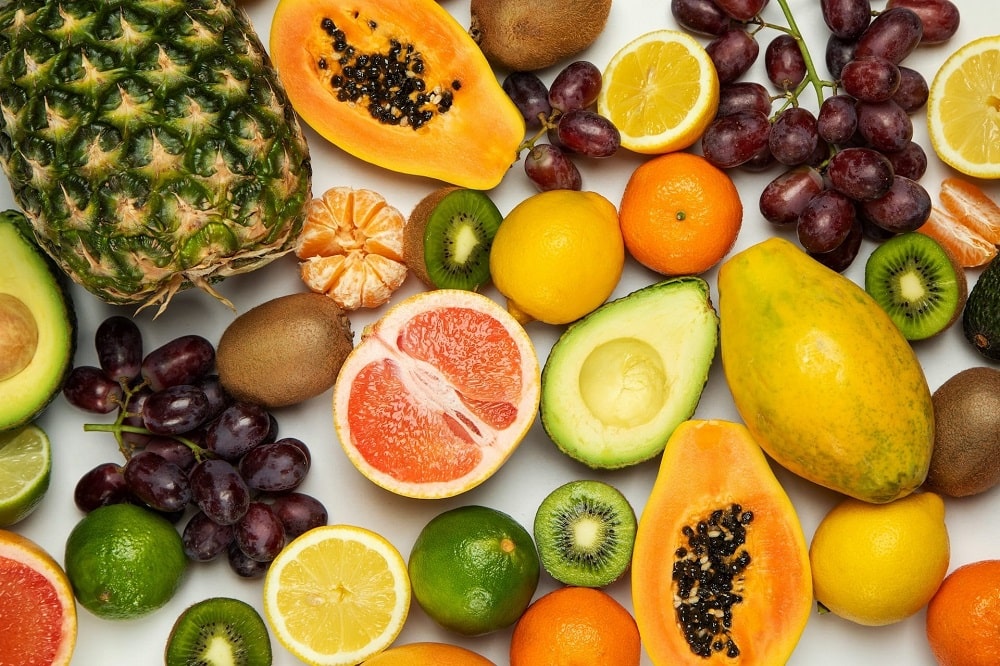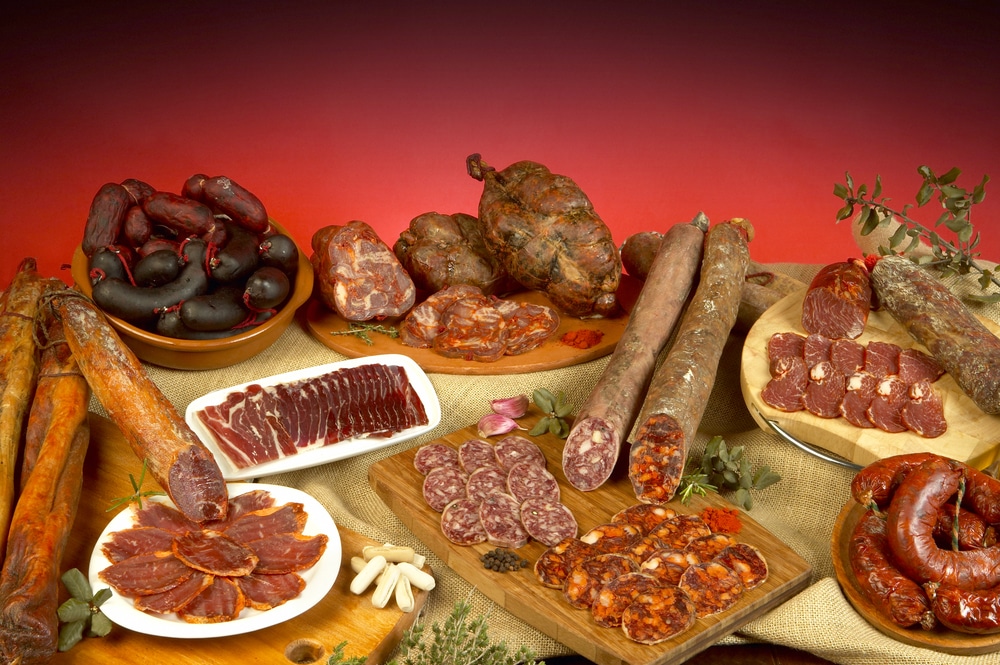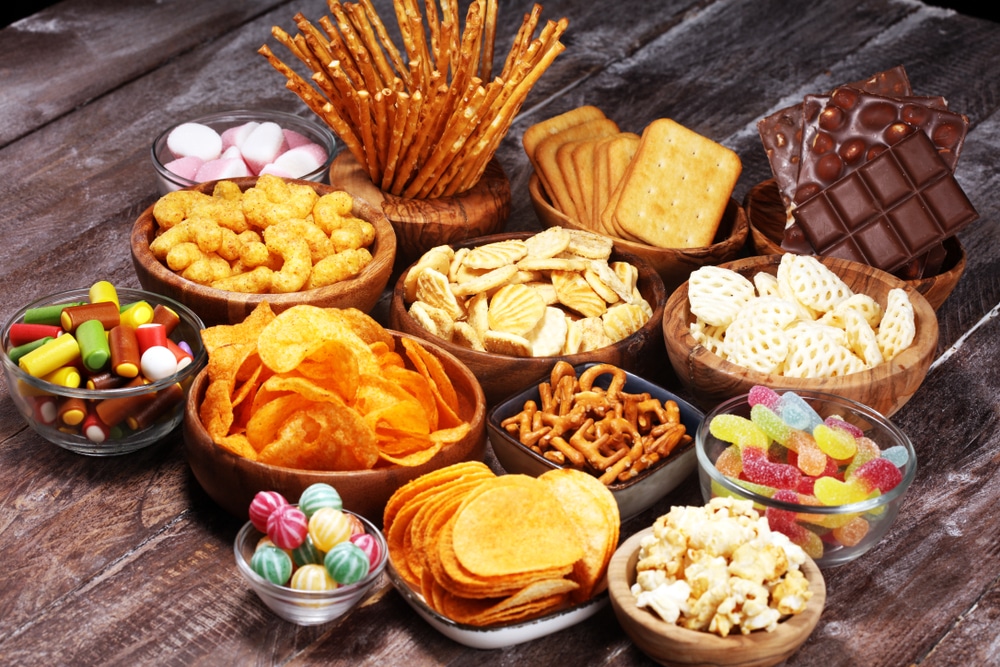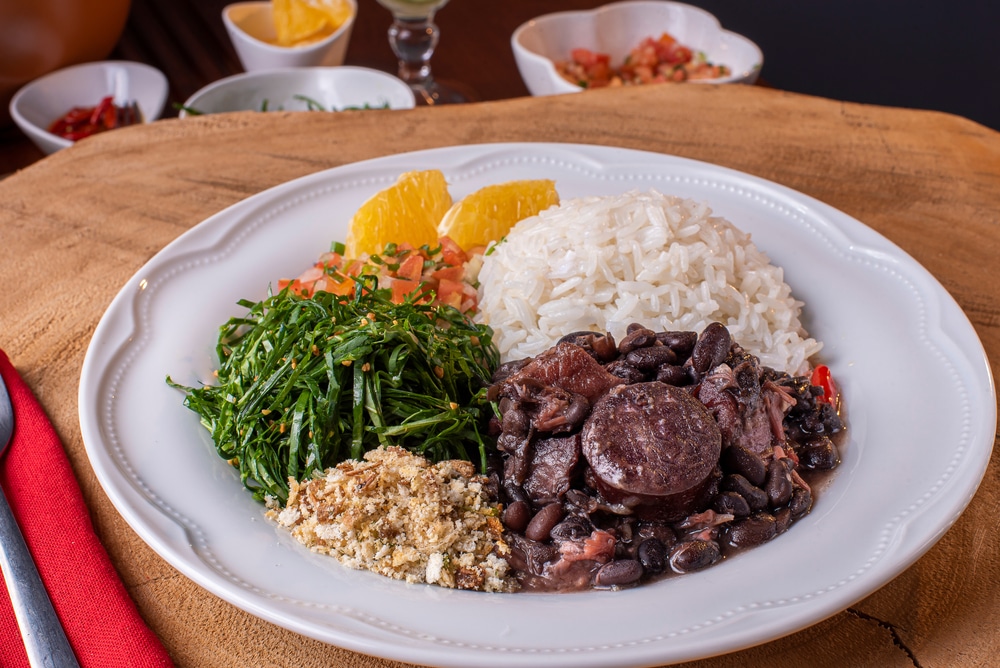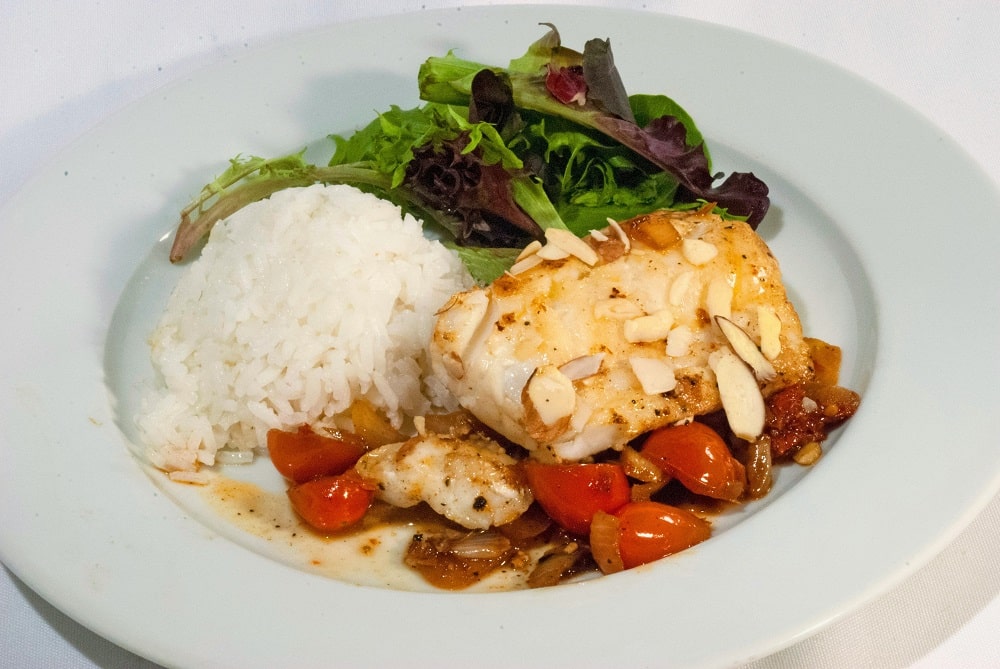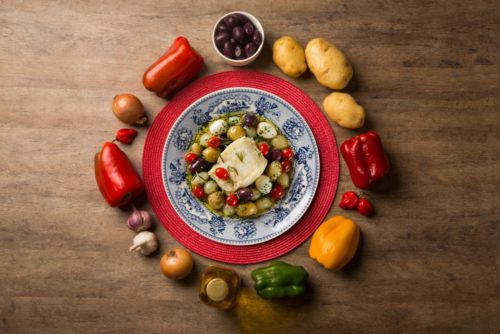
100+ Portuguese Words for Food and Drink (Audio Included)
If you’re making a trip to a Portuguese-speaking country anytime soon, you’d better brush up on your Portuguese food vocabulary. After all, talking about food will likely form the majority of your interactions in Portuguese.
Here you’ll find more than 100 common Portuguese food words with audio pronunciation, and learn about traditional Portuguese and Brazilian cuisine as well as food culture.
Contents
- Meal Words in Portuguese
- Grãos — Grains
- Laticínio — Dairy
- Vegetais — Vegetables
- Frutas — Fruits
- Carnes — Meats
- Sobremesas — Desserts
- Lanches — Snacks
- Bebidas — Drinks
- Phrases for the Grocery Store
- Phrases for the Restaurant
- Popular Food in Portuguese
- Portuguese Food Culture
- And One More Thing…
Download: This blog post is available as a convenient and portable PDF that you can take anywhere. Click here to get a copy. (Download)
Meal Words in Portuguese
1. Café da manhã — breakfast
2. Almoço — lunch
3. Jantar — dinner
4. Sobremesa — dessert
5. Lanche — snack
Grãos — Grains
6. Pão — bread
8. Arroz — rice
9. Aveia — oats
10. Farinha — flour
11. Pipoca — popcorn
Laticínio — Dairy
12. Leite — milk
13. Iogurte — yogurt
14. Manteiga — butter
15. Queijo — cheese
16. Leite condensado — condensed milk
Vegetais — Vegetables
17. Alface — lettuce
18. Pepino — cucumber
19. Tomate — tomato
20. Cenoura — carrot
21. Batata — potato
22. Cebola — onion
23. Brócolis — broccoli
24. Abóbora — pumpkin
25. Abacate — avocado
26. Alho — garlic
27. Salsinha — parsley
28. Ervilha — peas
29. Feijão — beans
Frutas — Fruits
30. Açaí — acai berry
31. Guaraná — guarana
32. Caju — cashew
33. Banana —banana
34. Maracujá — passionfruit
35. Uvas — grapes
36. Laranja — orange
37. Maçã — apple
38. Abacaxi — pineapple
39. Mamão — papaya
40. Limão — lemon
41. Pera — pear
42. Morango — strawberry
43. Melão — melon
44. Tangerina , mexerica — tangerine
Carnes — Meats
45. Frango — chicken
46. Bife — beef
47. Carne de porco — pork
48. Cachorro quente — hot dog
49. Cordeiro — lamb
50. Salsicha , linguiça — sausage
51. Peixe — fish
52. Camarão — shrimp
53. Presunto — ham
Sobremesas — Desserts
54. Bolo — cake
55. Brigadeiro — chocolate ball
56. Sorvete — ice cream
57. Torta de bolacha — cookie cake
58. Flan, torta doce — flan
59. Pudim — rice pudding
60. Chocolate — chocolate
61. Biscoito — cookie
Lanches — Snacks
62. Kibe — beef croquette
63. Coxinha — chicken croquette
64. Pão de queijo — cheese bread
65. Bolinho de bacalhau — cod croquette
66. Pastéis de nata — egg tart
67. Línguas de gato — biscuit
Bebidas — Drinks
68. Água — water
69. Refrigerante — soda
70. Cerveja — beer
71. Vinho — wine
72. Tereré — cold mate
73. Mate , chimarrão — hot mate
Phrases for the Grocery Store
One está o/a _____? — Where can I find the _____?
Quanta é _____? — How much does ______ cost?
Tem _____? — Do you have _____?
Phrases for the Restaurant
Quero _____. — I would like _____?
Tem um menu de sobremesa? — Can I see the dessert menu?
A conta, por favor. — Check, please!
Popular Food in Portuguese
If you end up going to Brazil (or an authentic Brazilian restaurant), there are some foods you don’t want to miss out on.
Feijoada
It’s a classic Brazilian dish in which you cook beans with pork parts, which makes the flavor really come out. Feijoada is eaten with rice and usually a salad.
Galinhada
This dish is exactly what it sounds like, but it’s more amazing than you can imagine.
The chicken is cooked in the rice with onion and garlic, and the final dish can be eaten with vinagrete (chopped tomatoes, onions and bell peppers mixed with olive oil and salt).
Moqueca
This is a tomato-based stew made with fish, onion, garlic and coriander that can include more seafood, such as prawns, swordfish and other boneless fish.
Pamonha
This is basically the Brazilian version of Mexican tamales.
It’s a sweet corn paste boiled and wrapped in corn husks, served with coconut milk or something savory like cheese, sausage or peppers.
Farofa
This is more of a topping that you eat mixed with your rice and beans, but it’s so extremely delicious.
It’s just toasted cassava flour mixed with spices and sometimes meat.
Pizza
This isn’t your regular pizza. It’s so much better.
Brazilian pizza doesn’t have the tomato sauce base and comes in a variety of different flavors.
(My favorite is pizza with bacon, heart of palm, corn and requeijão—a spreadable cheese you might not find in your area.)
Xis
This is basically a glorified hamburger because it’s larger and comes with more than your run-of-the-mill toppings.
It’s served with delicious sauce, corn, tomatoes, lettuce, peas and an over-easy egg.
Now, let’s talk about the dishes to try in Portugal.
Bacalhau
It’s the most famous dish in Portugal, which is dried and salted cod.
Some people claim that there are over 1,000 ways to cook with it, too. They sure do love their bacalhau in Portugal.
This is a must, and luckily it won’t be very hard to find.
Caldo verde
This is a Portuguese soup made with potatoes, collard greens, olive oil and salt. It sounds simple, but you can spice it up with garlic or onion and ham hock.
Polvo a lagareiro
This is a delicious octopus dish served with potatoes and herb-infused olive oil. And it sometimes involves bacalhau, too!
Cozido a Portuguesa
This is another stew made with vegetables, meat and smoked sausages. It’s considered part of Portuguese heritage.
Portuguese Food Culture
If you live someplace that has a considerable number of Brazilians, you might have heard of a Brazilian steakhouse, which in Portuguese is called a churrascaria.
Unlike a regular steakhouse, a churrascaria doesn’t just bring you a lump of meat accompanied by some mashed potatoes and vegetables.
Instead, you’re given a little block that’s red on one side and green on the other. Your server will let you know that green means, “Keep the meat coming,” red means, “Stop” and placed on its side means, “I’m ready for dessert!”
As long as your cube is green side up, you’ll be brought various types of meat on a large skewer. If you want the meat, the server will cut off a piece (or however many you request) and you can eat all you want. There’s also a buffet-style area where you can get salads and other delicious side dishes.
Visiting a churrascaria in Brazil is a must, and you can only really get the full experience if you do it in Portuguese! Just make sure they have the rodízio de carne (rotation of meat).
If your destination is Portugal, especially if you’re traveling during the holidays, you’re sure to get some bacalhau (cured codfish). There are many, many ways to cook with this fish, which the Portuguese love, so you’ll always see multiple bachalhau dishes on the Christmas table.
And for dessert, your host will most likely bring out bolo rei (King’s cake), which is similar to fruitcake. It’s shaped like a bundt cake and made from a soft, white dough, filled with raisins, nuts and candied fruit. On top, it’s covered with more candied fruit and nuts as well as some sugary icing.
And if you like it, you’re in luck, because they keep on serving it until January 6th, on Dia de Reis (Day of Kings).
Now that you know what you have to look forward to in Brazil and Portugal, you understand why it’s important to know the vocabulary.
Without the vocab, all you can do is smile and nod when the waiter speaks to you. With the knowledge and vocabulary in this post, though, you’ll know to ask for the delicious picanhã (filet steak) or anything else your heart (or rather, stomach) desires.
Congratulations! You’re now ready to speak about Portuguese and Brazilian food!
Has this post made you hungry for a traditional dish or two? Then go out and experience some with your newly acquired Portuguese food vocabulary words!
Download: This blog post is available as a convenient and portable PDF that you can take anywhere. Click here to get a copy. (Download)
And One More Thing…
If you've made it this far that means you probably enjoy learning Portuguese with engaging material and will then love FluentU.
FluentU takes authentic videos—like music videos, movie trailers, news and inspiring talks—and turns them into personalized Portuguese lessons.
Other sites use scripted content. FluentU uses a natural approach that helps you ease into the Portuguese language and culture over time. You’ll learn Portuguese as it’s actually spoken by real people.
FluentU has a wide variety of videos, as you can see here:

FluentU brings native videos within reach with interactive transcripts. You can tap on any word to look it up instantly. Every definition has examples that have been written to help you understand how the word is used. If you see an interesting word you don’t know, you can add it to a vocab list.

Review a complete interactive transcript under the Dialogue tab, and find words and phrases listed under Vocab.
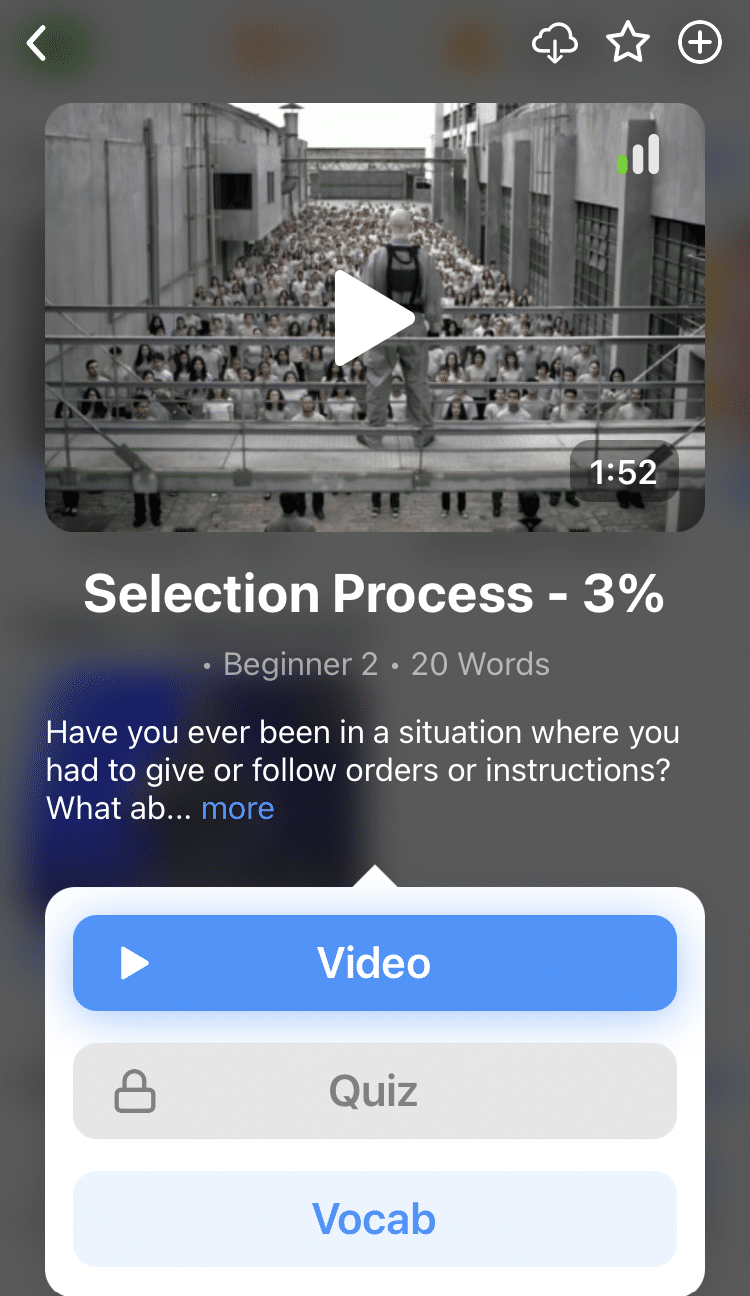
Learn all the vocabulary in any video with FluentU’s robust learning engine. Swipe left or right to see more examples of the word you’re on.
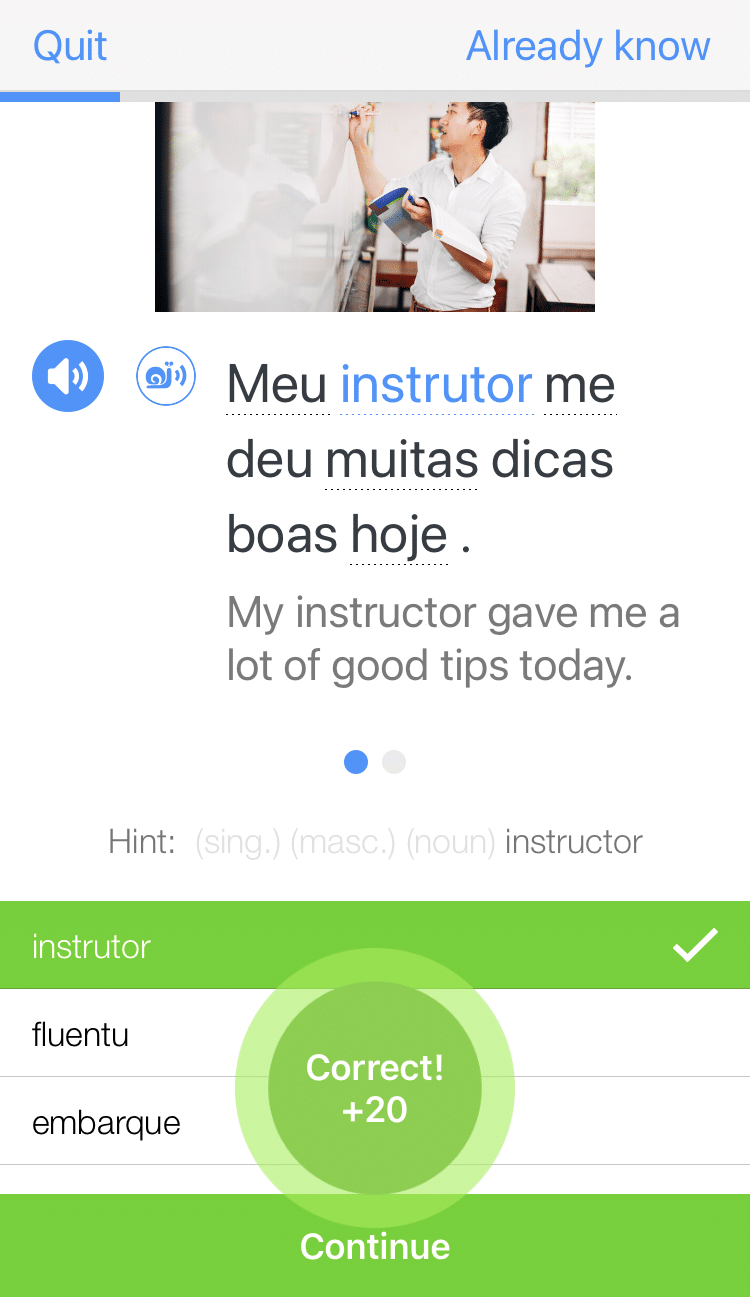
The best part is that FluentU keeps track of the vocabulary that you’re learning, and gives you extra practice with difficult words. It'll even remind you when it’s time to review what you’ve learned. Every learner has a truly personalized experience, even if they’re learning with the same video.
You can try FluentU for free for 2 weeks. Click here to check out the website or download the iOS app or Android app.
